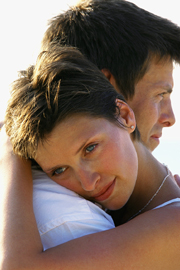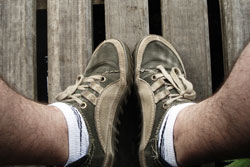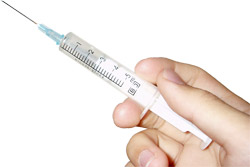- What is hyperhidrosis?
- Impact of hyperhidrosis
- Seeking treatment for hyperhidrosis
- Managing hyperhidrosis
- The effect of hyperhidrosis treatments on quality of life
What is hyperhidrosis?
Hyperhidrosis is a condition characterised by excessive perspiration in response to non-thermoregulatory stimuli; that is, in response to stimuli other than heat. It can be further categorised as:
- Focal hyperhidrosis, characterised by excessive sweating with no apparent cause, at one or more discrete anatomical sites, most commonly the:
- Armpits- axillary hyperhidrosis;
- Hands- palmar hyperhidrosis;
- Feet- plantar hyperhidrosis; and
- Face- craniofacial hyperhidrosis; or
- Generalised hyperhidrosis characterised by excessive sweating affecting the entire body, usually as a result of an underlying medical condition.
Hyperhidrosis is a highly prevalent condition. One US study reported 2.8% of the population experienced primary hyperhidrosis. However, it is also under-recognised and the majority of individuals affected by hyperhidrosis never seek medical advice about their condition.
Impact of hyperhidrosis
Hyperhidrosis is a benign disorder (of no danger to health); however, it carries serious implications for an individual’s quality of life and psychosocial wellbeing. Improving quality of life is a key treatment goal. The condition impairs daily activities and in doing so has a negative impact on quality of life. Women report being more affected compared to men. Similarly, individuals who develop hyperhidrosis early in life, compared to those who develop the condition later, also report more significant impairment. Those with axillary hyperhidrosis appear to be particularly affected in terms of quality of life, followed by those with palmar hyperhidrosis.
Quality of life and psychosocial wellbeing

Social life
The perceived impact of hyperhidrosis is strongly associated with the impact the condition has on a person’s social functioning. Many people with hyperhidrosis feel embarrassed by their condition in social situations. Those with palmar hyperhidrosis may be embarrassed to shake hands, particularly when meeting someone for the first time, because their palms are cold, wet and slippery. Wet palms may be taken by others as a sign of anxiety, and for individuals with palmar hyperhidrosis this can be an additional source of anxiety which worsens the condition. The vast majority of people with affected palms avoid shaking hands as a result of their condition. They may face stigma and discrimination when they need to shake hands.
Individuals with affected armpits may feel embarrassed by sweat-damp clothing, or needing to change clothes frequently. They may avoid public places or social gatherings as a result of their condition or be limited in the choice of clothing they can wear as a result of hyperhidrosis.
Recreational activities
Hyperhidrosis may limit involvement in sporting or leisure activities for some and others may change the type of leisure activities they participate in due to their sweating symptoms. For example, those with palmar hyperhidrosis may be unable to participate in sports requiring manual dexterity because their hands are damp and slippery. Playing a musical instrument is also difficult for individuals with palmar hyperhidrosis. Properly hydrated skin on the palms helps with grip and, therefore, the excessive hydration of hyperhidrosis interferes with all tasks requiring manual dexterity.
Intimate relationships
Hyperhidrosis may also impact on an individual’s ability to engage in intimate relationships and perform sexual activities. In one study the majority of people affected by hyperhidrosis (59%) reported that the condition considerably 
Work productivity and career development
Hyperhidrosis interferes with work activities and limits occupational opportunities, with negative economic implications for some people affected. Office workers with palmar hyperhidrosis may find dampness of the palms makes using a keyboard difficult or results in sweat-stained books and papers. Manual labourers may have a greater risk of injury, for example by electric shocks, or be less productive because palmar hyperhidrosis impairs their manual dexterity. They may be unable to grip or use occupation-specific tools or devices such as electronic equipment or weapons. This may, for instance, limit their ability to take up a position in the armed services or police. Of those affected by hyperhidrosis, 19% report that the condition directly influenced their choice of career.
Axillary hyperhidrosis is also reported by the majority (> 80%) of affected individuals to interfere with work activities. The condition may limit the amount of time people spend at work. It may also be a source of anxiety which prevents them performing some work tasks. For example they may be too embarrassed to make public presentations because of their excessive sweating. As with palmar hyperhidrosis, those with affected axillae may find their career choices limited due to social embarrassment. Reports from individuals affected by hyperhidrosis have indicated that they needed to change their work habits, are less effective, accurate and/or careful at the work they do, and/or accomplish less work because of their condition.
Diet
Some individuals affected by hyperhidrosis find their condition is aggravated by certain foods and that they have to modify their diet as a result. For example, they may need to avoid alcoholic or caffeinated beverages or spicy foods. However, evidence suggests that dietary factors trigger sweating in only a small proportion of people with hyperhidrosis.
Comorbid dermatological conditions
Hyperhidrosis is associated with an array of dermatological (skin) conditions including dermatitis, fungal infections such as candidiasis and bacterial infections. Constant dampness associated with the condition can result in skin maceration (softening) and the overgrowth of fungi or bacteria. For example, hyperhidrosis is associated with maceration of the skin of the soles which may result in bromhidrosis (offensive odour) or infection.
Physical discomfort
Dampness resulting from hyperhidrosis causes physical discomfort for many people. One study noted a 14 year old who developed poor posture as a result of slouching in an attempt to hide sweat stains on her clothing.
Expense

Seeking treatment for hyperhidrosis
Seeking treatment for hyperhidrosis is an important aspect of minimising the impact of the condition. Most people do not discuss their excessive sweating with a medical professional and thus do not treat the condition. In many cases this is because they are unaware that they have a treatable medical condition.Evidence suggests that only one-third of affected individuals receive treatment for hyperhidrosis. Detection and management of the condition can significantly improve quality of life and social wellbeing. All individuals who find excessive sweating interferes with their day-to-day life should consult their doctor. Select the response which best describes your sweating: If you are using the tool to monitor the effect of treatment, validation studies of this severity scale show that a one-point reduction in severity is associated with a 50% reduction in sweating. A two-point reduction is associated with an 80% reduction in sweating. References
Doctors may also notice symptoms of excessive perspiration (e.g. fungal infection, damp clothing) when an individual consults for another health problem. In these cases the doctor may also make enquiries about sweating, if they suspect hyperhidrosis. A tool such as the hyperhidrosis severity scale may be used to investigate sweating symptoms.
How would you rate the severity of your excessive sweating?
1. Eisenach JH, Atkinson JLD, Fealey RD. Hyperhidrosis: Evolving Therapies for a Well-Established Phenomenon. Mayo Clinical Proc. 2005; 80(5):657-66. [Abstract | Full Text]
2. International Hyperhydrosis Society. Hyperhidrosis disease severity scale. 2007. [cited 1 February 2012]. Available from: [URL Link]
Managing hyperhidrosis
A range of lifestyle measures can be taken to minimise the impact of hyperhidrosis on daily living and help individuals cope with their condition. Appropriate measures vary depending on the anatomical sites affected.
Maintaining good hygiene
Maintaining good hygiene is important for individuals affected by hyperhidrosis. They should bath daily and pay special attention to drying affected areas of skin (particularly the feet) to reduce bacterial concentrations. Affected feet should be aired regularly.
Absorbent pads
Individuals with axillary hyperhidrosis may benefit from using absorbent pads to prevent sweat from soaking through clothing.
Changing clothing
Axillary hyperhidrosis can result in sweat-soaked clothing and individuals who experience this may need to carry extra clothing to allow them to change as needed. One study of individuals with axillary hyperhidrosis reported that 70% needed to change their clothing at least twice a day.

Individuals with hyperhidrosis affecting the armpits may benefits from wearing clothing made from breathable materials such as silk and cotton, and avoiding manmade fibres and tight or restrictive clothing. Wearing black or white clothes may help reduce the visibility of sweat stains. Those with affected feet should wear thick socks made from cotton or wool, and rotate their socks and shoes. Shoes made from leather, mesh or canvas are most appropriate and those made from synthetic materials should be avoided by individuals with plantar hyperhidrosis.
Wearing gloves
Wearing gloves may make it easier for those with palmar hyperhidrosis to complete some tasks.
Relaxation
In some cases hyperhidrosis occurs in response to emotional stimuli. Practising relaxation techniques may assist individuals to cope with emotional stimuli that trigger sweating.
Rehydration
Excessive sweating may lead to dehydration if fluids are not replaced. Ensuring proper hydration is maintained is therefore an important component of managing the condition.
The effect of hyperhidrosis treatments on quality of life
A range of treatment options to reduce sweat production are available for individuals with hyperhidrosis. Treatment typically begins with simple, non-invasive options (e.g. topical antiperspirants) and progresses to more difficult treatments when these fail. Effective treatment, whether simple or invasive, is associated with improved quality of life.
Psychotherapy
Hypnosis, psychotherapy and biofeedback are only effective in treating a limited number of hyperhidrosis cases. For example, one study reported clinical improvement in sweating in 11 of 14 people treated with biofeedback for a 6 week period. Effective treatment typically leads to quality of life improvements; however, there is no direct evidence of the effects of psychotherapies on quality of life in people affected by hyperhidrosis.
Behavioural therapy
Behavioural therapies including assertiveness training and systematic desensitisation (to help overcome anxiety) have been reported as treatment options for hyperhidrosis. Cognitive behavioural therapy may be an effective addition to treatment in those with symptoms of anxiety. Effective treatment typically leads to quality of life improvements although there is no direct evidence of the effects of behavioural therapies on quality of life in hyperhidrosis.
Topical antiperspirants
Topical antiperspirants are a treatment option for individuals with focal hyperhidrosis, particularly when the armpits are affected. One study reported significant improvements in quality of life following treatment with topical antiperspirants.
Iontophoresis
Iontophoresis, a treatment which involves the introduction of ions to affected areas of skin via application of an electric current, is often effective in treating palmar or plantar hyperhidrosis, as these body parts can be easily submerged for the treatment. It provides temporary symptom relief and maintenance therapy is usually required. One study reported significant quality of life improvements following iontophoresis.
Botulinum toxin A
Injections of botulinum toxin A to affected areas of skin have been demonstrated to reduce the symptoms of hyperhidrosis. In Australia, Botox is approved for use as a treatment for cases of axillary hyperhidrosis. Several studies have reported that the treatment also improves quality of life and/or psychosocial wellbeing. For example, one study reported a reduction in anxiety, depression and social phobia following botulinum toxin A treatment, and also that quality of life improved.
Oxybutynin
Oxybutynin (an anticholinergic medicine which interferes with the transmission of nervous signals) is a treatment option for generalised hyperhidrosis underpinned by chronic medical conditions such as diabetes. One study reported 
Thoracic sympathectomy
Thoracic sympathectomy is a minimally invasive procedure which permanently resolves excessive sweating for the majority of people treated. In cases of palmar hyperhidrosis the treatment has been shown to improve quality of life, even if compensatory sweating (sweating at previously unaffected body sites) occurs following surgery.The surgery is also effective in permanently improving axillary hyperhidrosis with low (11%) recurrence rates. Quality of life improvements are sustained for at least 5 years following surgical treatment.
Other surgical treatments
Subcutaneous curettage (removal of tissues from under the skin) may be used to treat hyperhidrosis of the axillae and was reported to significantly improve quality of life in one study.
Article kindly reviewed by:
Associate Professor Karl Ng MB BS (Hons I) FRCP FRACP PhD CCT Clinical Neurophysiology (UK) Consultant Neurologist – Sydney North Neurology and Neurophysiology (download referral form and map); Conjoint Associate Professor – Sydney Medical School, University of Sydney; and Editorial Advisory Board Member of the Virtual Neuro Centre.
References
- Eisenach JH, Atkinson JL, Fealey RD. Hyperhidrosis: Evolving therapies for a well-established phenomenon. Mayo Clin Proc. 2005;80(5):657-66. [Abstract]
- Kumagai K, Kawase H, Kawanishi M. Health-related quality of life after thoracoscopic sympathectomy for palmar hyperhidrosis. Ann Thorac Surg. 2005;80(2):461-6. [Abstract]
- The effects on patients’ lives: Quality-of-life surveys [online]. International Hyperhidrosis Society; 2012 [cited 2 January 2012]. Available from: [URL link]
- The effects on patients’ lives: Social embarrassment and psychological effects [online]. International Hyperhidrosis Society; 2012 [cited 2 January 2012]. Available from: [URL link]
- Haider A, Solish N. Focal hyperhidrosis: diagnosis and management. CMAJ. 2005;172(1):69-75. [Abstract]
- Hamm H, Naumann MK, Kowalski JW, et al. Primary focal hyperhidrosis: Disease characteristics and functional impairment. Dermatology. 2006;212(4):343-53. [Abstract]
- Benohanian A, Solish N. Hyperhidrosis: Sweating out the details. Can J CME. 2004;77-81. [Full text]
- Collin J, Whatling P. Treating hyperhidrosis: Surgery and botulinum toxin are treatments of choice in severe cases. BMJ. 2000;320(7244):1221-2. [Abstract | Full text]
- Weber A, Heger S, Sinkgraven R, et al. Psychosocial aspects of patients with focal hyperhidrosis: Marked reduction of social phobia, anxiety and depression and increased quality of life after treatment with botulinum toxin A. Br J Dermatol. 2005;152(2):342-5. [Abstract]
- Cinà CS, Cinà MM, Clase CM. Endoscopic thoracic sympathectomy for hyperhidrosis: Technique and results. J Minim Access Surg. 2007;3(4):132-40. [Abstract | Full text]
- The effects on patients’ lives: Occupational tasks and activities of daily living [online]. International Society for Hyperhidrosis; 2012 [cited 2 January 2012]. Available from: [URL link]
- Amini M, Harmsze AM, Tupker RA. Patient’s estimation of efficacy of various hyperhidrosis treatments in a dermatological clinic. Acta Derm Venereol. 2008;88(4):356-62. [Abstract | Full text]
- The effects on patients’ lives: Physical discomfort [online]. International Society for Hyperhidrosis; 2012 [cited 2 January 2012]. Available from: [URL link]
- Gelbard CM, Epstein H, Hebert A. Primary pediatric hyperhidrosis: A review of current treatment options. Pediatric Dermatol. 2008;25(6):591-8. [Abstract]
- Wang R, Solish N, Murray CA. Primary focal hyperhidrosis: diagnosis and management. Dermatol Nurs. 2008;20(6):467-70. [Abstract]
- Treating hyperhidrosis [online]. National Health Service; 2011 [cited 4 January 2012]. Available from: [URL link]
- Moore A. Clinical vignette: Hyperhidrosis [online]. UCLA Health; 2011 [cited 4 January 2012]. Available from: [URL link]
- Hashmonai M, Kopelman D, Assalia A. The treatment of primary palmar hyperhidrosis: A review. Surg Today. 2000;30(3):211-8. [Abstract]
- Duller P, Gentry WD. Use of biofeedback in treating chronic hyperhidrosis: a preliminary report. Br J Dermatol. 1980;103(2):143-6. [Abstract]
- Bär LH, Kuypers BR. Behaviour therapy in dermatological practice. Br J Dermatol. 1973;88(6):591-8. [Abstract]
- de Campos JR, Kauffman P, de Campos Werebe E, et al. Questionnaire of quality of life in patients with primary hyperhidrosis. J Pneumologia. 2003;29(4). [Full text]
- Wolosker N, de Campos JR, Kauffman P, et al. Evaluation of quality of life over time among 453 patients with hyperhidrosis submitted to endoscopic thoracic sympathectomy. J Vasc Surg. 2012;55(1):154-6. [Abstract]
All content and media on the HealthEngine Blog is created and published online for informational purposes only. It is not intended to be a substitute for professional medical advice and should not be relied on as health or personal advice. Always seek the guidance of your doctor or other qualified health professional with any questions you may have regarding your health or a medical condition. Never disregard the advice of a medical professional, or delay in seeking it because of something you have read on this Website. If you think you may have a medical emergency, call your doctor, go to the nearest hospital emergency department, or call the emergency services immediately.









